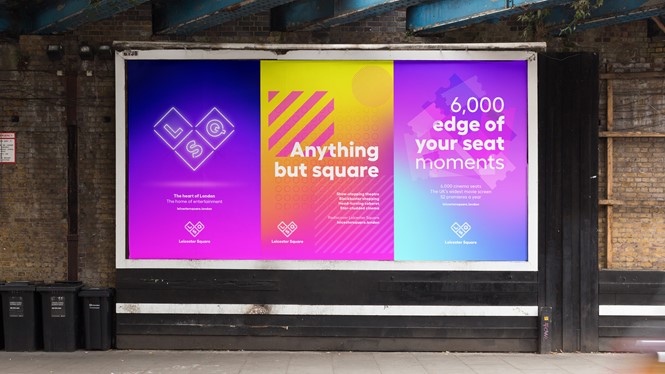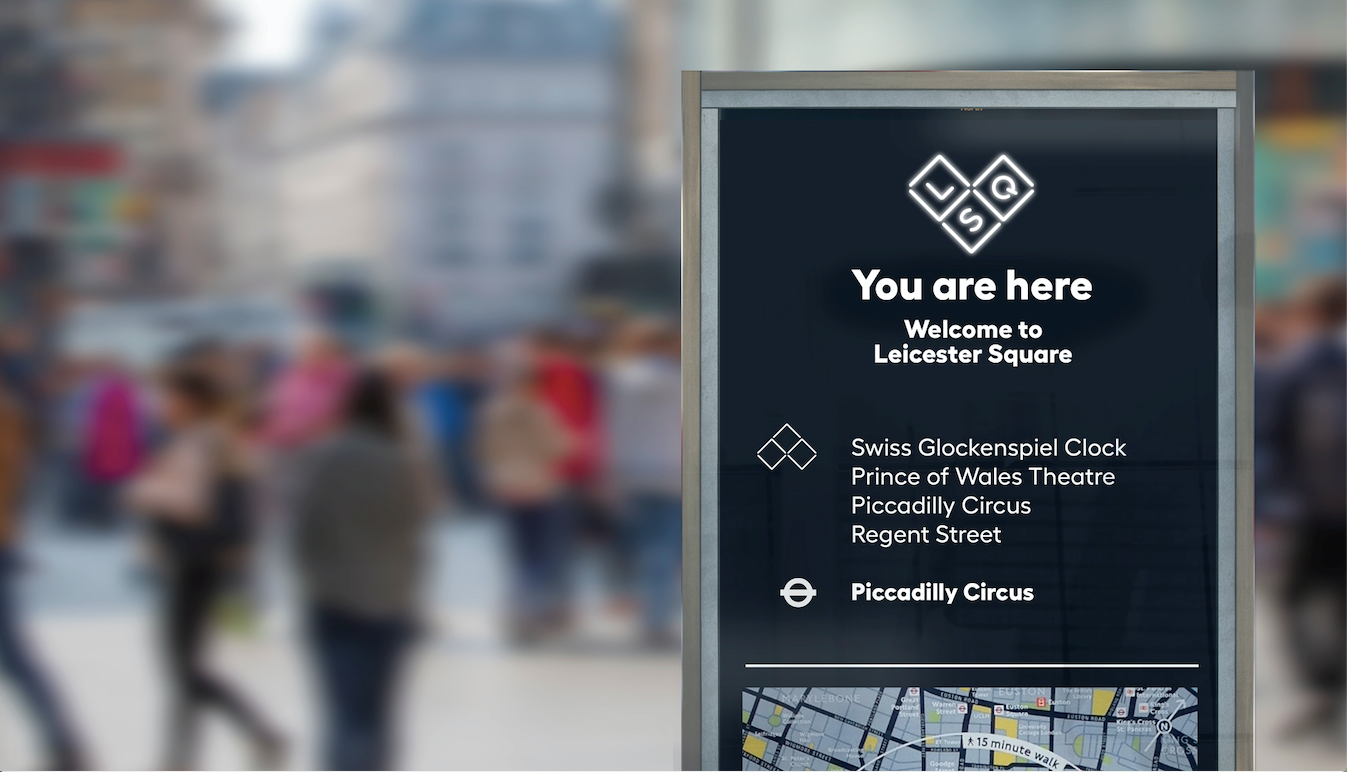Focus: Heart and soul

In the centre of central London stands the entertainment mecca of Leicester Square. It developed a new brand, with the support of Lantern, to address challenges and craft a new narrative
Dating back to 1670, when it was developed by the earl of Leicester, Leicester Square has been an important part of the London landscape since. However, it came into its own in the 19th century with the introduction of theatres to the area. Now home to over 6,000 cinema seats, a casino, numerous hotels, bars and restaurants and major flagship retail experiences, the area is the entertainment capital of London.
But it was not necessarily perceived that way. For tourists, Leicester Square is on the ‘must’ list. It’s the home of major movie premieres and occupies a distinctive place in the global cultural landscape. However, Londoners did not necessarily see it that way. Viewing it more as a gateway to other parts of the city, a place to walk through, rather than spend time in, the square had a unique challenge when it came to branding. It had to capitalise on its existing international prominence while changing the narrative for locals.
It missed a crucial opportunity to address this before the Olympics in 2012. The Mayor of London’s office – among others – invested £17m into the square’s environs. But it didn’t capitalise on that change through communications. The business investment district (BID) the Heart of London Business Alliance, enlisted Lantern to make change.
It took a new website to change all that. “The initial brief was for a new website for Leicester Square and they wanted a logo,” says place brand specialist Lantern’s director Ryan Tym. “Our argument was that there was a much bigger case for creating a narrative and a new story and a new positioning about what Leicester Square was as a destination.”
Lantern worked with the BID to understand the challenges the area faced, one of which was the missed opportunity to communicate following the massive 2012 investment. “That was an ideal opportunity to retell the story of what the square was about, but that didn’t happen. Over time, despite that money being spent and cleaning up its image, there was a disconnect between the perception of the square but also the potential for the story that could be told about it,” Tym says.
In redeveloping the area’s brand, Lantern examined the truths inherent in the location. Entertainment was a key focus, one that Tym leaned into when crafting the brand. Leicester Square hosts the Lego Store, the M&M store, numerous bars and clubs, several cinemas and other leisure venues. The brand took its cues from that, moving beyond a focus simply on film. “We wanted to shift that conversation of Leicester Square being purely about the home of film, to the home of entertainment. The positioning that we developed was, ‘The heart of London and the home of entertainment,’” Tym says.


Not only did that help reframe the conversation about the area, but it provided the BID with the tools to encourage other entertainment businesses to take up premises in the square in future.
Visually, Lantern developed a device simultaneously made up of squares, shaped like an ‘L’ and evoking a heart icon for the logo. Using the shorthand LSQ, instead of the longer, more unwieldy formal name allowed Lantern to simplify the wordmark. It was then rendered in a colourful gradient with bars that evoke a sense of neon lights. “It was very much about capturing the vibrancy of the area itself. That’s reflected in the vibrant gradient of colours used in the identity system,” says Tym. “The logo itself reflects this idea of it being the heart of London, but also captures the idea of entertainment.”
The visual identity is flexible across multiple applications and the logo is able to address corporate and consumer audiences alike. There are even plans to create a large-scale replica of the logo in the square in future.
The brand wasn’t complete with just a logo and positioning, though. Lantern had to craft a way to change the perception of the square among Londoners. Instead of operating as a one-stop destination or a gateway to Covent Garden or Soho, the BID wanted Leicester Square to become a day-long destination, somewhere locals would spend time and explore, taking advantage of all the entertainment options on offer.
Lantern developed a new tone of voice for the brand’s messaging that addresses those perceptions and introduce a new side to the square. Straplines like ’24/7 since 1670’ and ‘Look again at Leicester Square’ promotes the idea that there is more to the square than might be expected. ‘6,000 edge of your seat moments,’ and ‘Lego, lobster, chocolate, cabaret’ identify key activities and options available in the square.
Yet the Heart of London – which is comprised of representatives from businesses on the square – didn’t shy away from addressing negative perceptions head-on. Tym says the organisation tackled head-on the perceptions Londoners might have of the tourist-saturated area. “There’s no denying that. There’s no shying away from that. And actually,” he says, “the image of the square has moved on. It’s an opportunity for Londoners to look again.”
The stakeholders took this brave step and it seems to be paying off with positive reception thus far and the gold award for ‘Best place brand’ at the 2019 Transform Awards. Yet, the BID was not the only decision maker involved in the process. Though it was the organisation that enlisted the support of Lantern in developing the brand, Westminster City Council and the Resident’s Association also had an interest in the rebranding of Leicester Square. “There’s always a challenge in terms of managing stakeholder expectations. For us there were about 23 different stakeholders involved in the project. That’s a challenge in itself. Then there’s managing the expectation in terms of implementation, making sure that the momentum is kept up and when the logo is revealed it’s not a case of ‘that’s it.’ There’s actually a long term plan in place to promote the brand and create awareness around it,” Tym says.
From the heart of entertainment to the heart of London, the new brand is primed to earn a place in the hearts of Londoners as well.












